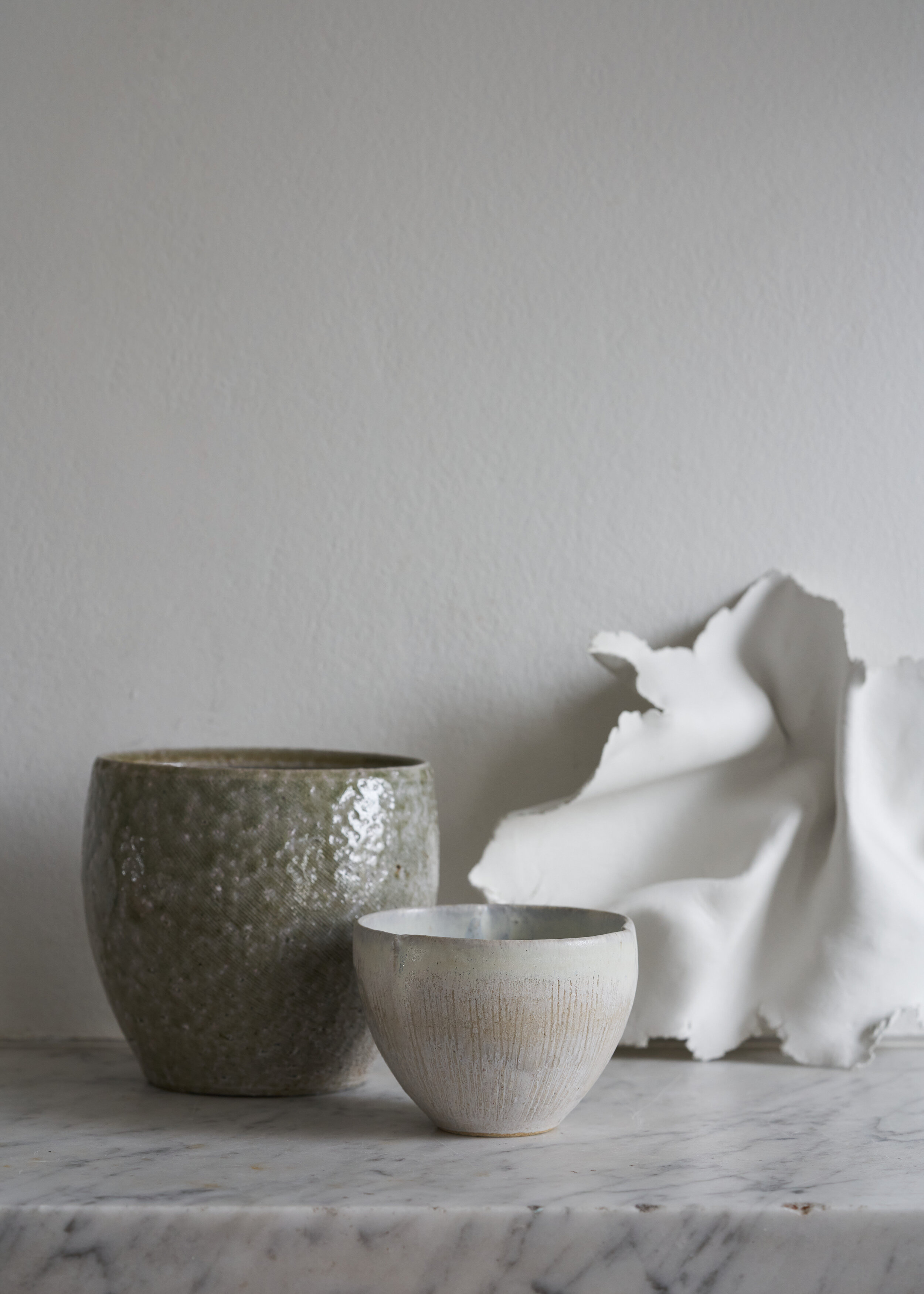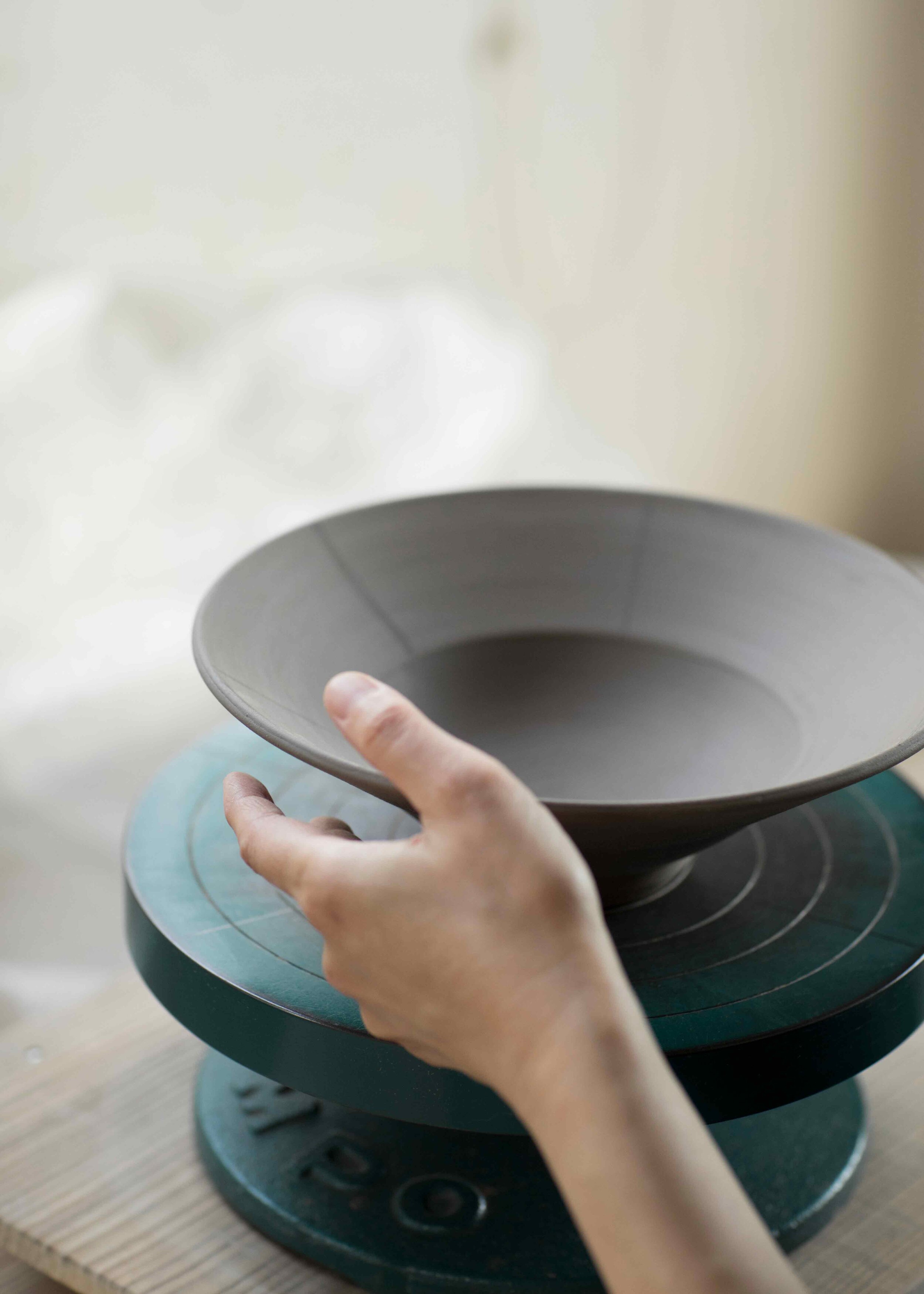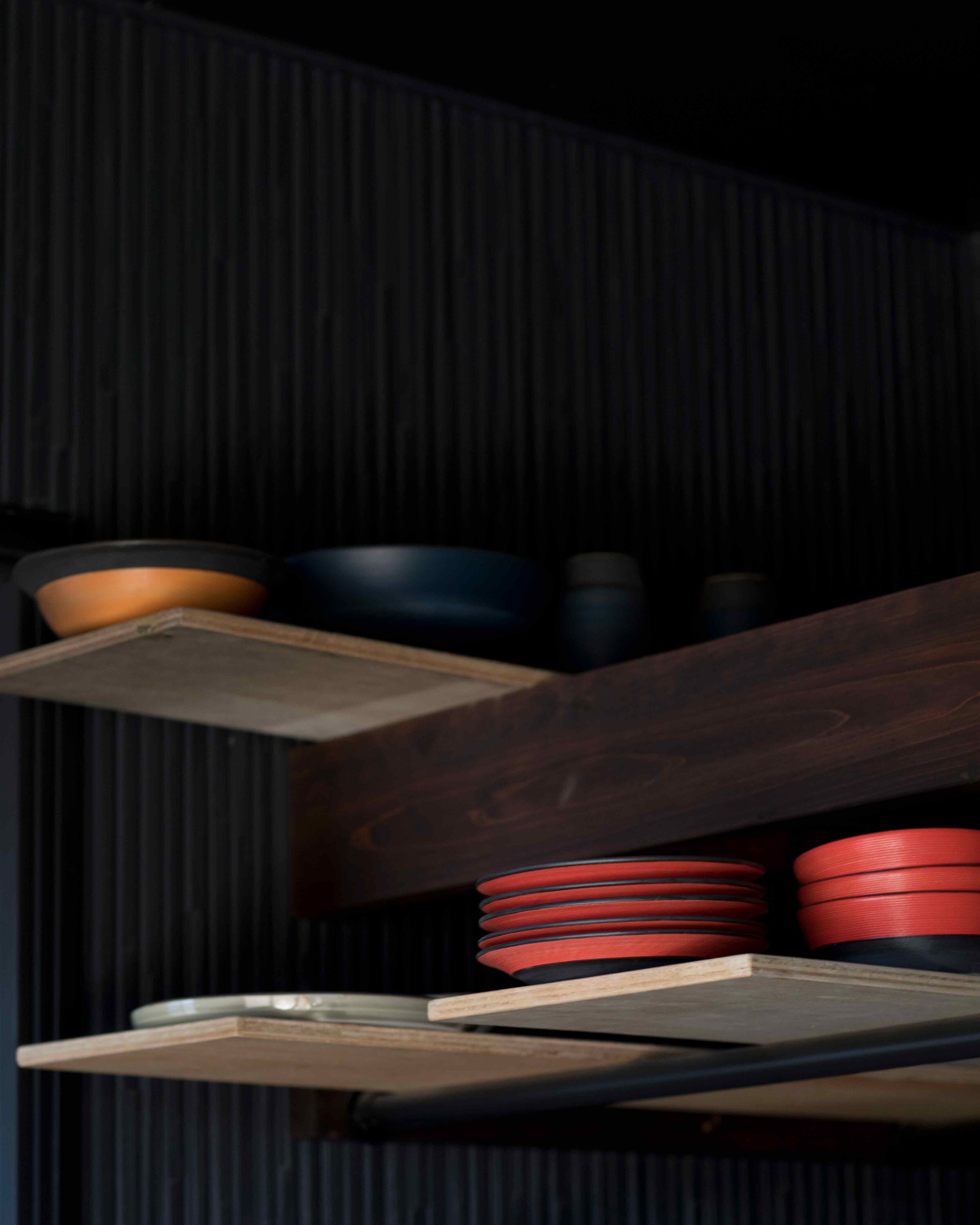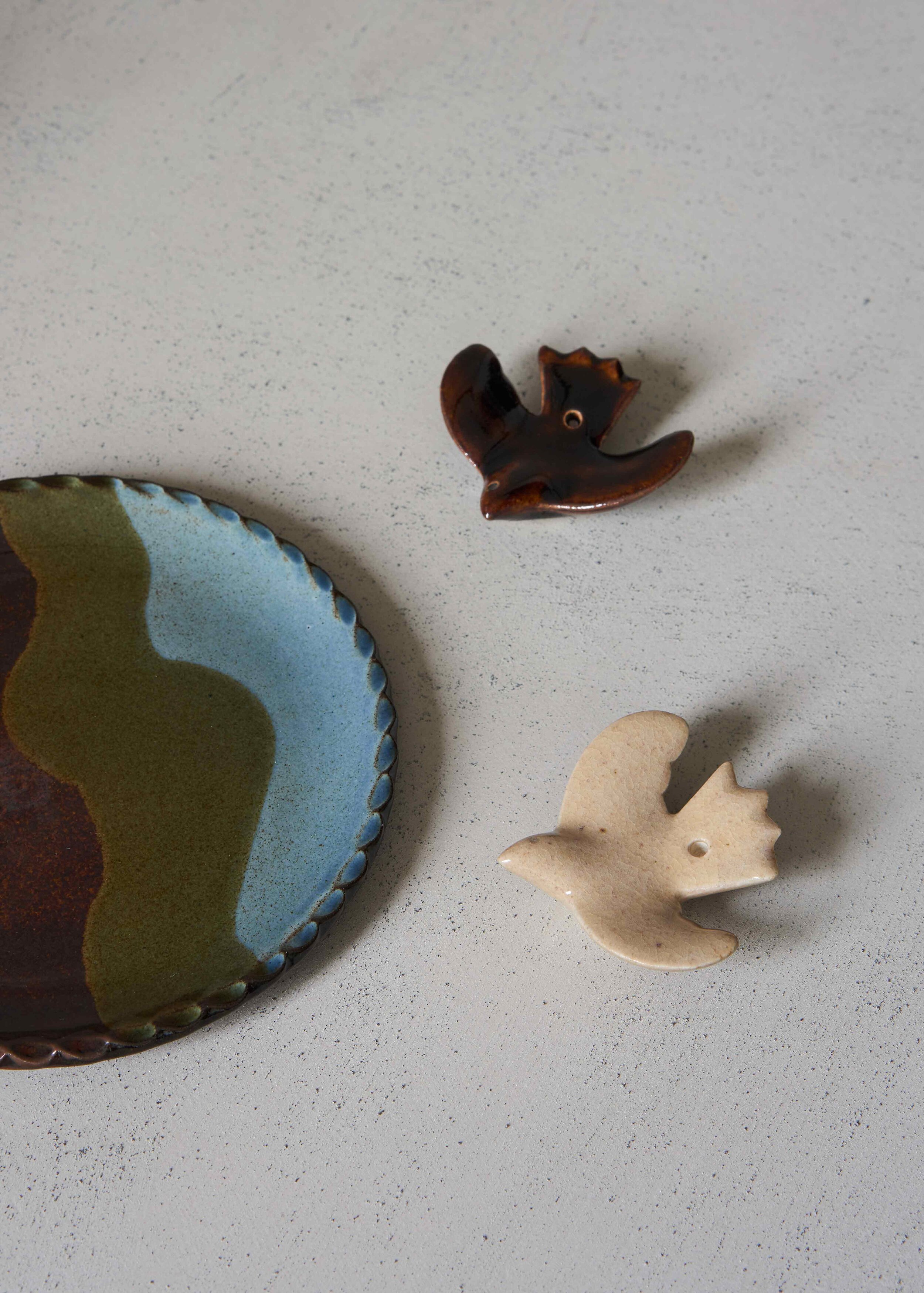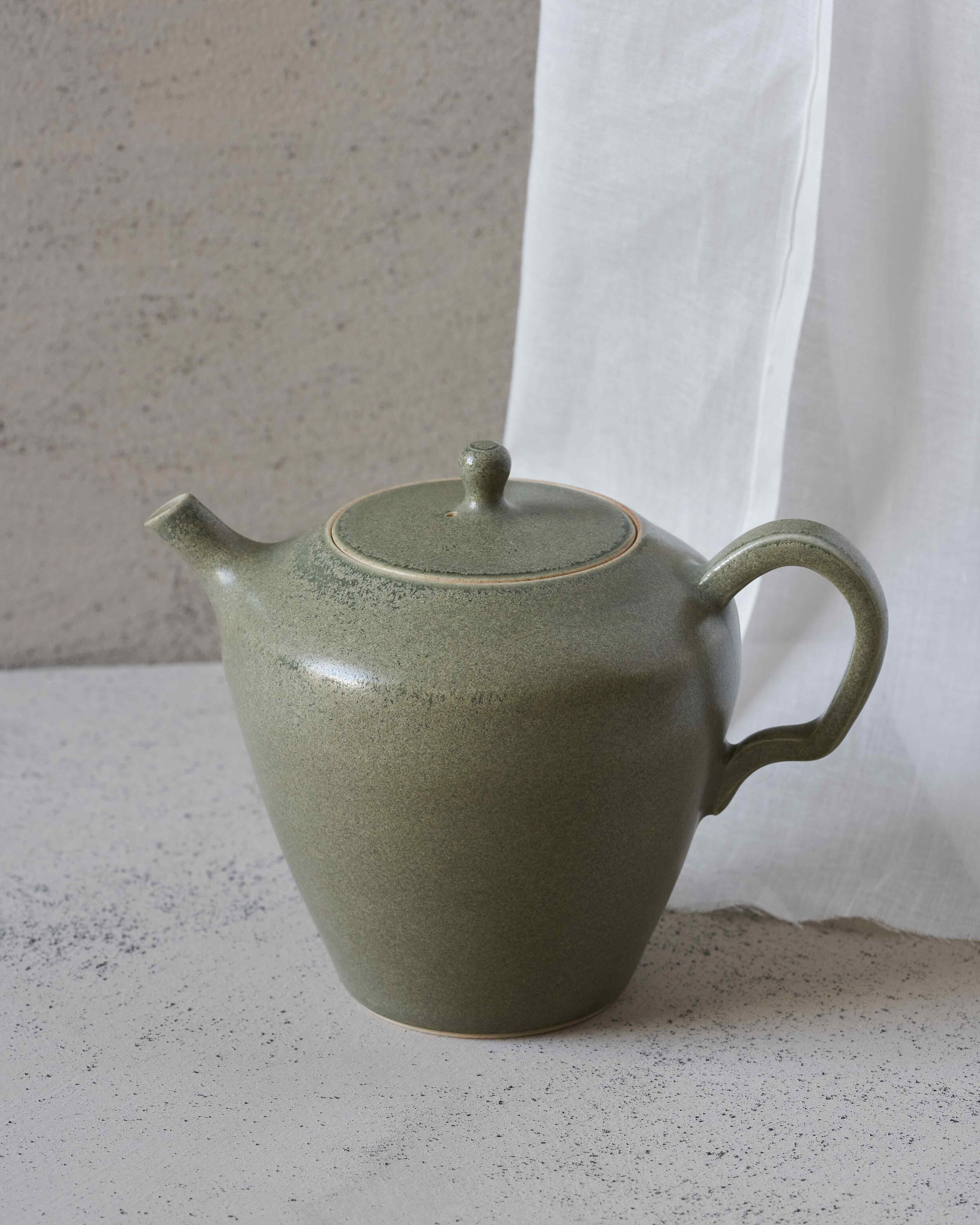A conversation with Ryoko Mutasono

The Kasama Potters project is part of Japan Brand. A scheme organised by Japan’s Ministry of Economy, Trade and Industry, Japan Brand supports the country’s small and medium-sized enterprises, helping them develop a presence overseas. In collaboration with the Kasama Pottery Association, and stakeholders in both local and central government, the Kasama Potters project brings together thirty-four of the city of Kasama’s ceramicists. The project’s aim is to promote and showcase Kasama ware, and its eclectic mix of ceramic styles.
Kasama ware is not as popular, well-known, or historic as that made in some of Japan’s more famous ceramic ware regions, for example, Arita ware and Bizen ware. Through the Kasama Potters project, there is an aspiration to establish Kasama as a destination for ceramics, and to broaden the outlook of Kasama’s ceramicists, enabling them to market themselves across Japan, in Europe, and the UK.
Ryoko Mutasono is a director of Lives London Limited, a company working to promote Japanese craft and design in the UK and Europe. Ryoko also manages wagumi, a boutique shop and gallery produced and run by Lives London. Based in London’s famous Oxo Tower, wagumi is a place in which to find hand-picked craft and design from Japan.
Since 2019, Lives London has managed the connection between Kasama and the British Ceramics Biennial in Stoke-on-Trent. With her extensive knowledge of Japanese ceramic wares and potters, particularly based in and around Kasama, Ryoko Mutasono is working to facilitate and deliver the Kasama Potters project. Here, we talk with Ryoko about the project, the Kasama region, and its potters.
How did the Kasama Potters project come about?
Originally, Kasama ware (called Kasama yaki in Japanese) was not well-known throughout Japan. Historically, Kasama ware has been a valued part of Kasama’s local industry, but has never been promoted beyond the city of Kasama (or Ibaraki Prefecture, around sixty miles from Tokyo). As a relative newcomer to Japan’s pottery industry, those artisans making Kasama ware have struggled to find their identity or build confidence in their work.
That said, with the recent resurgence of trends in handicraft and craftsmanship, it was hypothesised that the style of Kasama ware—one unbound by tradition, that allows makers to create freely—would suit the European lifestyle. We believe Kasama’s sense of freedom and individual expression could attract new pottery fans. When the Mayor of Kasama, Mr Yamaguchi, visited Stoke-on-Trent in 2019, he was convinced that Kasama City could learn from Stoke-on-Trent’s reconstruction and educational activities using ceramics. In particular, Stoke-on-Trent has been keen to place individual ceramicists at the centre of its ceramic revival, something that Kasama can learn from and promote.
The project is bringing together thirty-four individual ceramicists and small ceramic businesses. How did they become involved?
Those ceramicists who are interested in developing overseas sales channels, and who are seeking new role models and inspiration, apply to join the project and pay an annual fee. While there are currently thirty-four participants, it is anticipated more will join. Kasama has a ceramic community of around 250 potters.
Not content with the status quo, these ceramicists are keen to develop their own style, and focus on their own work. Moreover, they want to learn about the lifestyles of their customers, who live in different parts of the world.
Many of Kasama’s ceramicists are small-scale producers, living from their creative endeavours. How will the Kasama Potters project be of benefit to them?
Most importantly, after the project has completed it will help the ceramicists to sell directly to customers online. The main strength of the Kasama Potters project is threefold: ceramicists have the opportunity to develop their selling skills, to work on their individuality, and to become self-reliant and independent.
The term ‘selling’ covers a range of sales channels, markets, methods, and categories. In the first year of the project, the ceramicists will learn about different types of markets and customers. Each individual will decide where they want to go, working to create ceramic wares that will find appreciation in Europe and in Japan, and they will collaborate with UK ceramicists.
What sets the Kasama region apart from other ceramic regions in Japan?
Kasama ware has an unstructured style, and a relatively young history of 250 years. Although Japanese pottery is distributed throughout the country, it is more concentrated in central and western Japan (where historically, ceramic traditions are stronger): the ‘Six Ancient Kilns of Japan’ are located in the country’s Chubu, Kansai, and Chugoku regions. After Japan’s capital moved from Kyoto, in the Kansai region, to Edo (now Tokyo), pottery production in Kasama began to meet the demands of the growing city. To begin with, the aim was to supply the manufacture of water jugs for shrines and temples in the suburbs of the capital.
Today, Kasama’s close proximity to Tokyo offers the capital’s citizens an opportunity to explore Kasama ware, and to experience the creative community first-hand.
What are your own aspirations for the Kasama Potters project?
Tradition is, on the one hand, one of the best aspects of Japanese culture. On the other, it can pose something of a burden, and is sometimes viewed as the opposite of freedom. Pottery is a part of Japanese culture, with a strong, traditional element. For example, when young people today aspire to make pottery, they might feel constrained by tradition and convention. Kasama ware has none of this: anyone can make the kind of pottery they wish, at any age, without judgement.
One aspiration is that the appeal of Kasama, and the hope for the future of Kasama ware, will create many new fans and new Kasama ceramicists. Another aspiration is that the project will arouse interest in those people who might not have thought much about Japan or its pottery, particularly Kasama ware. My dream is that one day, perhaps in twenty years, when people see a unique piece of Japanese pottery, they might think that’s from Kasama.
How will you measure the project’s success?
There are a number of prerequisites for success: as a Japan Brand project, as a maker of Kasama ware, and as a producer in the UK who supports the project. I would say we all have slightly different goals, but the end goal is that each ceramicist is motivated to sell more of their work, and to make Kasama wares without the need for government support.
I believe the key to success comes from learning and knowledge, action and communication. If we can give our future Kasama ware ceramicists the opportunity to make connections with various experts in Stoke-on-Trent as an example, and to go out into the world without fear, then success will follow. I want them to be more adventurous.
Kasama ceramic wares can be traced back to the Edo period in Japanese history. How important is the continued preservation of tradition and craft to the Kasama region?
Kasama ware does not have any particular traditional technique, and this has proved to be an issue of great complexity for many years. That said, I think the fact—or historical fact—that the city of Kasama continue to make pottery, in a manner that changes and evolves, is what makes Kasama ware unique. This pottery can become a new trend.
Kasama ware is often said to have ‘no individuality, no trademark’. We want to make this our strength, with the ability to adapt and change as we wish. Kasama ware ceramicists are probably the strongest and most enthusiastic people in the Japanese pottery industry: they want to make a difference.
Wabi-sabi is considered a quintessential Japanese aesthetic. Its aesthetic principles can include: uniqueness, irregularity, warmth, unpretentiousness, and earthiness. Is wabi-sabi a concept or a philosophy that is knowingly embraced by Kasama’s ceramicists?
When you are involved in pottery and crafts, you are bound to learn about Japanese ideas, including: wabi-sabi, attention to detail, the karesansui style of Japanese gardening, and yō no bi (where everyday objects have an intrinsic beauty). The Japanese philosopher SoetsuYanagi (who developed ‘mingei’ or ‘folk craft’), believed in the art of the people, in rejection of the perfect, in simplicity and utility.
The actual outcome is not always the same. Some Kasama ware ceramicists have a more colourful style, others a more western style. Even if the style itself is not overtly wabi-sabi, the careful production of each piece, the natural flow of colour and glaze, allowing the chemical reactions to take over, these are all connected to the underlying Japanese philosophy of ‘letting nature take over’. And this is also the origin of wabi-sabi.
Are there any unusual pottery pieces from Kasama, objects that people in the UK and Europe might find particularly unique?
Yes. The ‘neriage’ (kneading technique) used by Kosei Matsui, who is a living national treasure—like the famous Japanese potter Shōji Hamada, who established the town of Mashiko as a world-renowned pottery centre. Mashiko is a twenty minute drive from Kasama, and the two places share a strong ceramic heritage.
There are only a few ceramicists who follow the neriage technique (where different coloured clays are laminated together, then thrown on a wheel to develop a swirling, spiralling effect). Neriage has not been handed down as the ‘Kasama colour’, but I think it is only in Kasama where a potter can show their individuality to the fullest, creating such a precise technique by focusing on one thing.
Banner Image: Pieces by Tomoka Nomura, Shungo Nemoto and Ken Shōji



